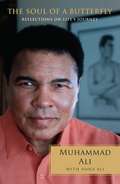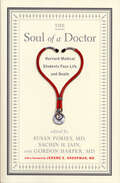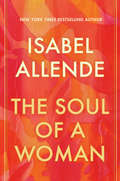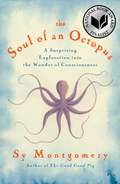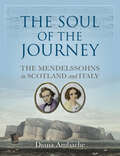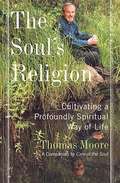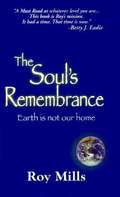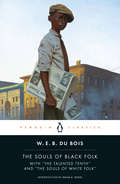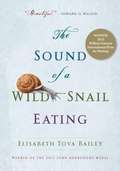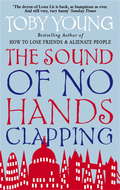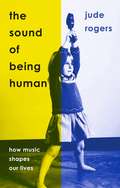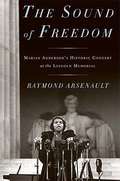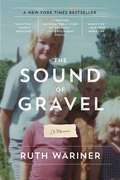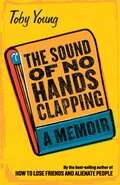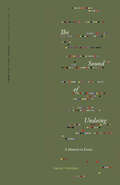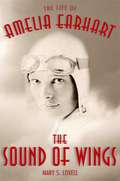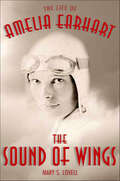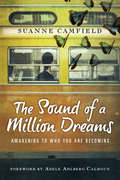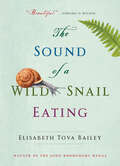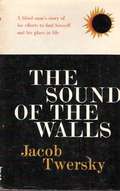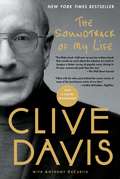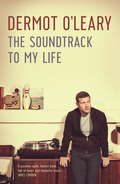- Table View
- List View
The Soul of a Butterfly: Reflections on Life's Journey
by Muhammad Ali Hana Yasmeen AliFormer boxing legend Muhammad Ali, one of the best-known and best-loved celebrities and an international goodwill ambassador, offers inspiration and hope as he describes the spiritual philosophy that sustains him.&“During my boxing career, you did not see the real Muhammad Ali. You just saw a little boxing. You saw only a part of me. After I retired from boxing my true work began. I have embarked on a journey of love.&” So Muhammad Ali begins this spiritual memoir, his description of the values that have shaped and sustained him and that continue to guide his life. In The Soul of a Butterfly the great champion takes readers on a spiritual journey through the seasons of life, from childhood to the present, and shares the beliefs that have served him well. Ali reflects on his faith in God and the strength it gave him during his greatest challenges. He describes how his study of true Islam has helped him accept the changes in his life and has brought him to a greater awareness of life&’s true purpose. As a United Nations Messenger of Peace, he has traveled widely, and he describes his 2002 mission to Afghanistan to heighten public awareness of that country&’s desperate situation, as well as his more recent meeting with the Dalai Lama. Ali&’s reflections on topics ranging from moral courage to belief in God to respect for those who differ from us will inspire and enlighten all who read them. Written with the assistance of his daughter Hana, The Soul of a Butterfly is a compassionate and heartfelt book that will provide comfort for our troubled times.
The Soul of a Doctor: Harvard Medical Students Face Life and Death
by Jerome E. Groopman Gordon Harper Sachin H. Jain Susan PoriesTrue stories of transitioning from medical school classrooms to the realities of the hospital: “Moving, eloquent, and often unforgettable” (Atul Gawande, MD). After years of practice, doctors can sometimes seem aloof, uncaring, and hurried. What goes on in their minds? Were they always like that, or has their work changed them? And how do some physicians manage to retain their warmth and humanity over the course of a long career? This “thoughtful and illuminating” book takes us into the day-to-day lives of third-year medical students at an Ivy League school—just starting out in their profession and dealing with patients face-to-face for the first time (Publishers Weekly). In their own words, more than forty of them reveal what it’s really like to enter this field, having their principles of scientific rigor and idealism tested as they cope with real people and real crises in real time. This doctor’s-eye view of the dramas—and occasional comedies—of the world of health care offers fascinating insights about clinical medicine and a behind-the-scenes look at a job that can range from repetitive routines to life-and-death decisions at any given moment. These stories “offer a unique vantage on illness, life, and struggle—capturing in vivid glimpses that crucial moment in a doctor’s life when one transitions from outsider to insider” (Atul Gawande, MD, New York Times–bestselling author of Being Mortal). “Thoughtful and illuminating.” —Publishers Weekly
The Soul of a Nation Reader: Writings by and about Black American Artists, 1960-1980
by Mark Godfrey Allie BiswasThe soul of a nation reader, What is "Black art"? Between 1960 and 1980, this question was asked and answered time and again by artists, curators, and critics deeply affected by the civil rights movement and the ensuing social and political upheavals that roiled communities and institutions across the United States. In newspapers, magazines, exhibition catalogues, and panel discussions, an intense debate arose about how Black artists should or should not engage with politics, what audiences they should address and inspire, where they should exhibit, how their work should be curated, and even whether such a category as "Black art," or the "Black aesthetic," existed in the first place. Originating in research for the landmark traveling exhibition Soul of a Nation: Art in the Age of Black Power, this anthology brings together more than two hundred texts, most of them rare and long out of print. Soul of a Nation co-curator Mark Godfrey sets the stage with a substantial introduction to the anthology, and Allie Biswas, the volume's coeditor, provides essential context with her individual introductions to the texts. As lively as it is enlightening, the book makes an invaluable contribution to the fields of twentieth-century art history and African American studies.
The Soul of a Woman
by Isabel AllendeFrom the New York Times bestselling author of A Long Petal of the Sea comes a passionate and inspiring meditation on what it means to be a woman. <P><P>“When I say that I was a feminist in kindergarten, I am not exaggerating,” begins Isabel Allende. As a child, she watched her mother, abandoned by her husband, provide for her three small children without “resources or voice.” Isabel became a fierce and defiant little girl, determined to fight for the life her mother couldn’t have. <P><P>As a young woman coming of age in the late 1960s, she rode the second wave of feminism. Among a tribe of like-minded female journalists, Allende for the first time felt comfortable in her own skin, as they wrote “with a knife between our teeth” about women’s issues. She has seen what the movement has accomplished in the course of her lifetime. And over the course of three passionate marriages, she has learned how to grow as a woman while having a partner, when to step away, and the rewards of embracing one’s sexuality. <P><P>So what feeds the soul of feminists—and all women—today? To be safe, to be valued, to live in peace, to have their own resources, to be connected, to have control over our bodies and lives, and above all, to be loved. On all these fronts, there is much work yet to be done, and this book, Allende hopes, will “light the torches of our daughters and granddaughters with mine. They will have to live for us, as we lived for our mothers, and carry on with the work still left to be finished.”
The Soul of an Octopus: A Playful Exploration Into the Wonder of Consciousness
by Sy MontgomeryIn this astonishing book from the author of the bestselling memoir The Good Good Pig, Sy Montgomery explores the emotional and physical world of the octopus-a surprisingly complex, intelligent, and spirited creature-and the remarkable connections it makes with humans. Sy Montgomery's popular 2011 Orion magazine piece, "Deep Intellect," about her friendship with a sensitive, sweet-natured octopus named Athena and the grief she felt at her death, went viral, indicating the widespread fascination with these mysterious, almost alien-like creatures. Since then Sy has practiced true immersion journalism, from New England aquarium tanks to the reefs of French Polynesia and the Gulf of Mexico, pursuing these wild, solitary shape-shifters. Octopuses have varied personalities and intelligence they show in myriad ways: endless trickery to escape enclosures and get food; jetting water playfully to bounce objects like balls; and evading caretakers by using a scoop net as a trampoline and running around the floor on eight arms. But with a beak like a parrot, venom like a snake, and a tongue covered with teeth, how can such a being know anything? And what sort of thoughts could it think? The intelligence of dogs, birds, and chimpanzees was only recently accepted by scientists, who now are establishing the intelligence of the octopus, watching them solve problems and deciphering the meaning of their color-changing camouflage techniques. Montgomery chronicles this growing appreciation of the octopus, but also tells a love story. By turns funny, entertaining, touching, and profound, The Soul of an Octopus reveals what octopuses can teach us about consciousness and the meeting of two very different minds.
The Soul of the Journey: The Mendelssohns in Scotland and Italy
by Diana AmbacheBrother and sister Felix and Fanny Mendelssohn enjoyed a rare bond: they were intimate companions and theirs was one of the most significant musical relationships of the 19th century. They shared and commented on each other’s compositions, each highly appreciative of the other but also offering frank, critical advice. Their travels produced some great music – Felix’s best loved works, the Hebrides Overture and the Scottish Symphony, were inspired by his 1829 visit to Scotland, whilst Fanny’s innovative piano cycle Das Jahr was a musical response to the tour of Italy she made in 1839–40. Combining letters and sketches with an accompanying narrative describing their journeys, this is a wonderful celebration of the two Mendelssohns and a portrait of Scotland and Italy of the time as seen through the eyes of two of the Romantic movement’s most acclaimed composers.
The Soul's Religion: Cultivating a Profoundly Spiritual Way of Life
by Thomas MooreIn this companion volume to his worldwide bestseller, Care of the Soul, Thomas Moore offers a way of living in this new and confusing century. Drawing on faiths front all over the world, as well as from his own vast well of knowledge and personal experience, Moore shows us how religion can be used to embrace others, rather than exclude them. He helps us become comfortable with our doubts, and reveals a liberating truth. It is in the dark corners of the soul that faith is born.
The Soul's Remembrance: Earth Is Not Our Home
by Roy MillsAn excellent book, simplistically written and of interest to Christians. It tells of remembering heaven before birth and relates events in the life of the author which he knew about before being born. A fascinating read.
The Souls of Black Folk: With "The Talented Tenth" and "The Souls of White Folk"
by Donald B. Gibson W. E. Du Bois Monica E. ElbertDu Bois' 1903 collection of essays is a thoughtful, articulate exploration of the moral and intellectual issues surrounding the perception of blacks within American society.
The Sound Of A Wild Snail Eating
by Elisabeth Tova BaileyIn a work that beautifully demonstrates the rewards of closely observing nature, Elisabeth Bailey shares an inspiring and intimate story of her uncommon encounter with a Neohelix albolabris --a common woodland snail. <P><P> While an illness keeps her bedridden, Bailey watches a wild snail that has taken up residence on her nightstand. As a result, she discovers the solace and sense of wonder that this mysterious creature brings and comes to a greater under standing of her own confined place in the world. <P> Intrigued by the snail's molluscan anatomy, cryptic defenses, clear decision making, hydraulic locomotion, and mysterious courtship activities, Bailey becomes an astute and amused observer, providing a candid and engaging look into the curious life of this underappreciated small animal. <P> Told with wit and grace, The Sound of a Wild Snail Eating is a remarkable journey of survival and resilience, showing us how a small part of the natural world illuminates our own human existence and provides an appreciation of what it means to be fully alive.
The Sound Of No Hands Clapping: A Memoir
by Toby YoungWhen even his friends refer to him as 'a balding, bug-eyed opportunist with the looks of a beach ball, the charisma of a glove-puppet and an ego the size of a Hercules supply plane,' the odds of Toby Young scoring - in any sense - appear to be slim. But then HOW TO LOSE FRIENDS, his memoir about failing to take Manhattan, becomes an international bestseller. Now Tinseltown beckons. After receiving a once-in-a-lifetime opportunity from a Hollywood producer, Toby sets his sights anew on a high-flying career, this time on the West Coast. But it doesn't take long for Toby's self-sabotaging instincts to reassert themselves. On the home front, though, things are looking up: Toby persuades his girlfriend to marry him and move to Los Angeles - but then she decides to abandon her promising legal career in order to become a full-time housewife . . . and mother.Toby's hapless attempts to pursue a glamorous showbiz career while buried in nappies will strike a chord with all modern fathers struggling to find the right work/life balance . . . and with their exasperated wives. Failure - and fatherhood - have never been funnier.
The Sound Of No Hands Clapping: A Memoir (Playaway Adult Nonfiction Ser.)
by Toby YoungWhen even his friends refer to him as 'a balding, bug-eyed opportunist with the looks of a beach ball, the charisma of a glove-puppet and an ego the size of a Hercules supply plane,' the odds of Toby Young scoring - in any sense - appear to be slim. But then HOW TO LOSE FRIENDS, his memoir about failing to take Manhattan, becomes an international bestseller. Now Tinseltown beckons. After receiving a once-in-a-lifetime opportunity from a Hollywood producer, Toby sets his sights anew on a high-flying career, this time on the West Coast. But it doesn't take long for Toby's self-sabotaging instincts to reassert themselves. On the home front, though, things are looking up: Toby persuades his girlfriend to marry him and move to Los Angeles - but then she decides to abandon her promising legal career in order to become a full-time housewife . . . and mother.Toby's hapless attempts to pursue a glamorous showbiz career while buried in nappies will strike a chord with all modern fathers struggling to find the right work/life balance . . . and with their exasperated wives. Failure - and fatherhood - have never been funnier.
The Sound of Being Human: How Music Shapes Our Lives
by Jude Rogers'Too often we treat popular music as wallpaper surrounding us as we live our lives. Jude Rogers shows the emotional and cerebral heft such music can have. It's a personal journey which becomes universal. Fascinating' Ian Rankin'Moving and absorbing, The Sound of Being Human mixes memoir, analysis, anecdote and personal chronicle into a mosaic that evokes what music means to the individual and the human tribe. A candid, beautiful read' Stuart MaconieThe Sound of Being Human explores, in detail, why music plays such a deep-rooted role in so many lives, from before we are born to our last days. At its heart is Jude's own story: how songs helped her wrestle with the grief of losing her father at age five; concoct her own sense of self as a lonely adolescent; sky-rocket her relationships, both real and imagined, in the flushes of early womanhood, propel her own journey into working life, adulthood and parenthood, and look to the future.Shaped around twelve songs, ranging from ABBA's 'Super Trouper' to Neneh Cherry's 'Buffalo Stance', Kraftwerk's 'Radioactivity' to Martha Reeves and the Vandellas' 'Heat Wave', the book combines memoir and historical, scientific and cultural enquiry to show how music can shape different versions of ourselves; how we rely upon music for comfort, for epiphanies, and for sexual and physical connection; how we grow with songs, and songs grow inside us, helping us come to terms with grief, getting older and powerful memories. It is about music's power to help us tell our own stories, whatever they are, and make them sing.
The Sound of Being Human: How Music Shapes Our Lives
by Jude Rogers'Too often we treat popular music as wallpaper surrounding us as we live our lives. Jude Rogers shows the emotional and cerebral heft such music can have. It's a personal journey which becomes universal. Fascinating' Ian Rankin'Moving and absorbing, The Sound of Being Human mixes memoir, analysis, anecdote and personal chronicle into a mosaic that evokes what music means to the individual and the human tribe. A candid, beautiful read' Stuart MaconieThe Sound of Being Human explores, in detail, why music plays such a deep-rooted role in so many lives, from before we are born to our last days. At its heart is Jude's own story: how songs helped her wrestle with the grief of losing her father at age five; concoct her own sense of self as a lonely adolescent; sky-rocket her relationships, both real and imagined, in the flushes of early womanhood, propel her own journey into working life, adulthood and parenthood, and look to the future.Shaped around twelve songs, ranging from ABBA's 'Super Trouper' to Neneh Cherry's 'Buffalo Stance', Kraftwerk's 'Radioactivity' to Martha Reeves and the Vandellas' 'Heat Wave', the book combines memoir and historical, scientific and cultural enquiry to show how music can shape different versions of ourselves; how we rely upon music for comfort, for epiphanies, and for sexual and physical connection; how we grow with songs, and songs grow inside us, helping us come to terms with grief, getting older and powerful memories. It is about music's power to help us tell our own stories, whatever they are, and make them sing.
The Sound of Freedom: Marian Anderson, the Lincoln Memorial, and the Concert that Awakened America
by Raymond ArsenaultAward-winning civil rights historian Ray Arsenault describes the dramatic story behind Marian Anderson's concert at the Lincoln Memorial--an early milestone in civil rights history--on the seventieth anniversary of her performance. On Easter Sunday 1939, the brilliant vocalist Marian Anderson sang before a throng of seventy-five thousand at the Lincoln Memorial in Washington--an electrifying moment and an underappreciated milestone in civil rights history. Though she was at the peak of a dazzling career, Anderson had been barred from performing at the Daughters of the American Revolution's Constitution Hall because she was black. When Eleanor Roosevelt resigned from the DAR over the incident and took up Anderson's cause, however, it became a national issue. Like a female Jackie Robinson--but several years before his breakthrough--Anderson rose to a pressure-filled and politically charged occasion with dignity and courage, and struck a vital blow for civil rights. In the 1963 March on Washington, Martin Luther King would follow, literally, in Anderson's footsteps. This tightly focused, richly textured narrative by acclaimed historian Raymond Arsenault captures the struggle for racial equality in 1930s America, the quiet heroism of Marian Anderson, and a moment that inspired blacks and whites alike. You can find this concert on YouTube.
The Sound of Gravel: A Memoir
by Ruth WarinerA riveting, deeply-affecting true story of one girl's coming-of-age in a polygamist cult.Ruth Wariner was the thirty-ninth of her father's forty-two children. Growing up on a farm in rural Mexico, where authorities turned a blind eye to the practices of her community, Ruth lives in a ramshackle house without indoor plumbing or electricity. At church, preachers teach that God will punish the wicked by destroying the world and that women can only ascend to Heaven by entering into polygamous marriages and giving birth to as many children as possible. After Ruth's father--the man who had been the founding prophet of the colony--is brutally murdered by his brother in a bid for church power, her mother remarries, becoming the second wife of another faithful congregant. In need of government assistance and supplemental income, Ruth and her siblings are carted back and forth between Mexico and the United States, where her mother collects welfare and her step-father works a variety of odd jobs. Ruth comes to love the time she spends in the States, realizing that perhaps the community into which she was born is not the right one for her. As Ruth begins to doubt her family's beliefs and question her mother's choices, she struggles to balance her fierce love for her siblings with her determination to forge a better life for herself. Recounted from the innocent and hopeful perspective of a child, The Sound of Gravel is the remarkable true story of a girl fighting for peace and love. This is an intimate, gripping tale of triumph, courage, and resilience.
The Sound of No Hands Clapping: A Memoir
by Toby YoungWith a major motion picture of How to Lose Friends and Alienate People about to be released (starring Simon Pegg, Kirsten Dunst, and Jeff Bridges), there has never been a better time to savor this laugh-out-loud memoir from everyone’s favorite “professional failurist.” The Sound of No Hands Clapping finds Toby pursuing a glamorous career in Hollywood while trying to balance his new life as a husband and parent. Failure-and fatherhood-have never been funnier.
The Sound of Undoing: A Memoir in Essays (American Lives)
by Paige TowersA memoir in essays, The Sound of Undoing deconstructs the way sound has overwhelmingly shaped Paige Towers&’s life. Each essay focuses on a different sound, some perceptible—like the sound of a loon call or gunshot—and others abstract—like the sound of awakening. Given a hypersensitivity to noise from which she has both suffered and benefited since childhood, Towers uses these sounds as a starting point for making sense of past events. She reflects on the estrangement of a beloved sister, sexual abuse and assault, and the link between mental illness and noise in her family, as well as nature, religion, violence, and other themes. Experimental in form and provocative in content, The Sound of Undoing also makes use of research on silence, nature and noise pollution, listening, sound art, autonomous sensory meridian response, and the acoustic environment in general. By exploring memories and feelings triggered by certain noises, this lyrical meditation untangles a life infused with meaning through sound.
The Sound of Wings: The Life of Amelia Earhart
by Mary S. LovellBiography of aviation legend Amelia Earhart delivers a report on Earhart's life--from her tomboy childhood and fascination with flying, her business/matrimonial relationship with publisher G.P. Putnam to her consuming quest for aviation fame.
The Sound of Wings: The Life of Amelia Earhart
by Mary S. LovellMary S. Lovell's bestselling biography The Sound of Wings is the basis for the major movie Amelia, starring Richard Gere and Hilary Swank.When Amelia Earhart mysteriously disappeared in 1937 during her attempted flight around the world, she was already known as America's most famous female aviator. Her sense of daring and determination, rare for women of her time, brought her insurmountable fame from the day she became the first woman to cross the Atlantic in an airplane.In this definitive biography, Mary S. Lovell delivers a brilliantly researched account on Earhart's life using the original documents, letters, the logbooks of Earhart and her contemporaries, and personal interviews with members of Amelia's family, friends and rival aviators. The Sound of Wings vividly captures the drama and mystery behind the most influential woman in "The Golden Age of Flight"—from her tomboy days at the turn of the century and her early fascinations with flying, to the unique relationship she shared with G.P. Putnam, the flamboyant publisher and public relations agent who became both her husband and her business manager.This is a revealing biography of an uncommonly brave woman, and the man who both aided and took advantage of her dreams.
The Sound of a Million Dreams: Awakening to Who You Are Becoming
by Adele Ahlberg Calhoun Suanne CamfieldWhat does a dream sound like? "The first time the sound of a dream slammed, hard, in the center of my spirit, was almost a decade ago. It's the sound that has led me on the journey whose threads are pulled through this book, an intimate pilgrimage, often ironically nomadic, that I've struggled to comprehend; it's been unlike anything else I've ever known. It happened in a coffee shop during my thirtieth year, and in less than two hours it caused me to listen to my life anew." In these pages writer and speaker Suanne Camfield writes of the varied dreams that she has pursued over the course of her life. With captivating and eloquent stories and concepts, she guides us through what it feels like to have a stirring deep inside of us and how God guides and shapes us through that sense of calling. This is not a book primarily about vocation or even discernment. It is a book about being a dreamer who is shaped by God. It is about having the wisdom and courage to step into the places of our most vulnerable longing.
The Sound of a Wild Snail Eating
by Elisabeth Tova BaileyIn a work that beautifully demonstrates the rewards of closely observing nature, Elisabeth Tova Bailey shares an inspiring and intimate story of her encounter with a Neohelix albolabris—a common woodland snail. While an illness keeps her bedridden, Bailey watches a wild snail that has taken up residence on her nightstand. As a result, she discovers the solace and sense of wonder that this mysterious creature brings and comes to a greater understanding of her own place in the world. Intrigued by the snail’s molluscan anatomy, cryptic defenses, clear decision making, hydraulic locomotion, and courtship activities, Bailey becomes an astute and amused observer, offering a candid and engaging look into the curious life of this underappreciated small animal. The Sound of a Wild Snail Eating is a remarkable journey of survival and resilience, showing us how a small part of the natural world can illuminate our own human existence, while providing an appreciation of what it means to be fully alive.
The Sound of the Walls
by Jacob TwerskyAs a small child in Poland, Jacob Twersky contracted an illness which left him almost totally blind. His parents hoped that a doctor in the United States could restore their son's sight, and this hope spurred them to emigrate in the mid-1920s. Twersky describes his childhood in Poland and Brooklyn, his years attending a resource room for blind children and a regular high school, and his eventual decision to enroll at a school for the blind. His struggle to accept his blindness is a theme throughout the book, threading its way through his college years, his struggle to find a teaching position, and his courtship and marriage.
The Soundtrack of My Life
by Anthony Decurtis Clive DavisIn this star-studded autobiography, Clive Davis shares a personal, candid look into his remarkable life and the last fifty years of popular music as only a true insider can.In the history of popular music, no one looms as large as Clive Davis. His career has spanned more than forty years, and he has discovered, signed, or worked with a staggering array of artists: Whitney Houston, Janis Joplin, Simon and Garfunkel, Barry Manilow, Patti Smith, Lou Reed, Dionne Warwick, Carlos Santana, The Grateful Dead, Alicia Keys, Kelly Clarkson, Jennifer Hudson, and Aretha Franklin, to name a few. He has been inducted into the Rock and Roll Hall of Fame, received a Lifetime Achievement Grammy, and hosted the world's highest profile parties. In this fully illustrated, personal account, Davis tells all, from becoming an orphan in high school and getting through college and law school on scholarships, to being falsely accused of embezzlement and starting up his own record company, J Records. His wealth of experience offers valuable insight into the evolution of the music business over the past half-century and into the future. Told with Davis's unmatched wit, frankness, and style, The Soundtrack of My Life exposes a trove of never-before-heard stories--some hilarious, others tragic, all revealing--that will captivate and inspire all music lovers.
The Soundtrack to My Life
by Dermot O'LearyThis is the story of Dermot's life so far, from growing up in semi rural Colchester with his Irish born parents, to landing one of the biggets jobs in television. Throughout this journey, music has been a constant companion: a best friend, confidant, a really annoying sibling, and at times a tormentor. Here Dermot shows that really it is the songs that choose you., not the other way round. These are the tracks that have a hold on us because they have become inextricably linked to the most important moments of our lives and spark the memories and stories that shape us. With a wonderful gift for storytelling Dermot describes with humour and brilliant detail, what it was like to grow up a second generation Irishman in 70s England. The Pope, rebel songs and Irish dancing were all part of everyday life, along with the usual brand of chlidhood nostalgia, like endless summers, freshly cut grass and the occasional dead animal found in a ditch. Dermot's homelife was filled with music which was to set the scene for the years ahead. From Irish folk singer Brendan Shine's Catch Me If You Can to The Smiths, Elbow and Dermot's hero Bruce Springsteen, in Now Playing Dermot shares with us his musical DNA.
